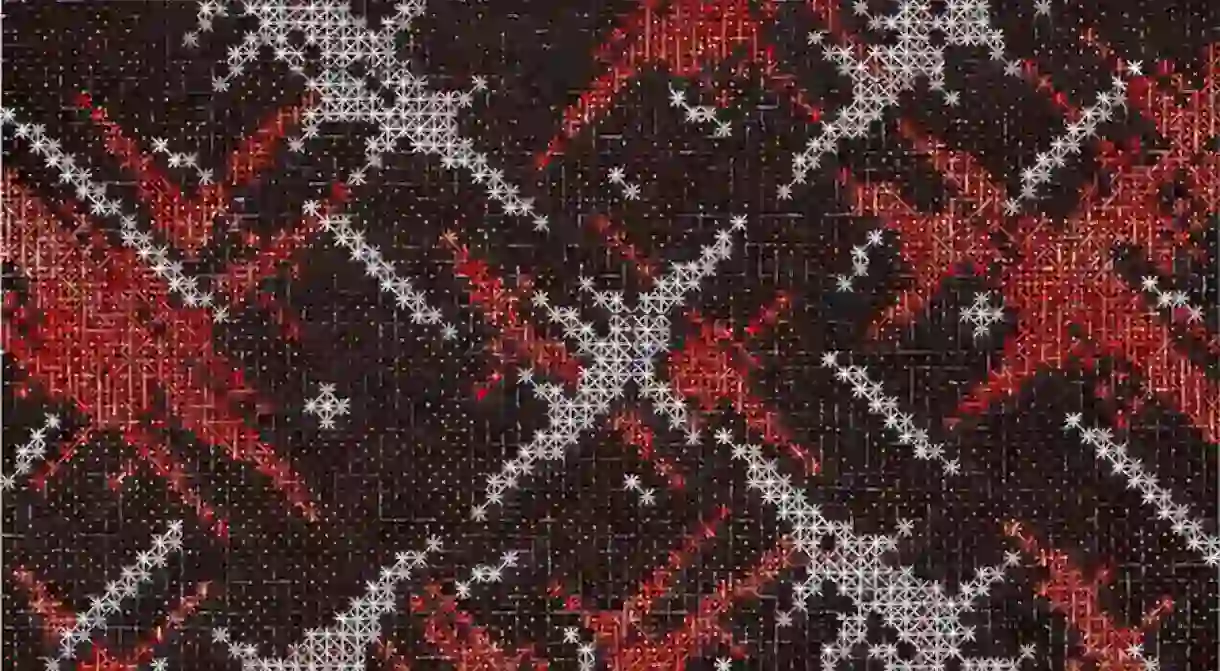Ahead of Several New York Exhibitions, an Interview With Chinese Artist Ding Yi

Ding Yi (b. 1962, Shanghai) rose to prominence in the 1980s as one of China’s premier abstract artists. Ahead of three New York City exhibitions at Timothy Taylor, Sean Scully, and the Guggenheim this fall, Culture Trip spoke with Ding Yi about his influences, and his celebrated long-standing aesthetic.
Culture Trip (CT): You have a busy season coming up, with three exhibitions at Timothy Taylor, Sean Scully, and the Guggenheim Museum. What do you hope New York City audiences take away from your work?
Ding Yi (DY): The works [that are] going to be shown in these exhibitions were created in different ages, with different materials. The exhibition at Timothy Taylor will present 16 small, recent works on paper. Four large-scale woodcuts completed last year will go to Sean’s studio, and two early works I did in 1991 are included in the upcoming group show at the Guggenheim. I hope [these varying works] present different aspects of my art to New York City audiences.

CT: What is the significance of the grids and crosses?
DY: The grids and crosses were first used as a way to express myself in a free but orderly way—as an escape from oppressive social standards—but now they have become my unique artistic language that help me to go deeper into the painting.

CT: Some of your paintings feature one color in contrast with a black background and grey/white accents. Is there a significance to the colors you choose to highlight?
DY: I prefer to use certain color tones in each series. The color tones of my woodcuts are usually red or green. I like to work in some restriction, and the color is one such restriction. Also, with a black background and grey/white accents, the featured color can be more vivid and energetic.

CT: Your work has a digital-meets-folk-art quality. Are you responding to the tension between tradition and modernization?
DY: I live in Shanghai, where Western culture and lifestyle go together with tradition. I’m influenced by such social contexts, as are my artworks—this happens subconsciously. So it’s reasonable if the audience feels some kind of tension between tradition and modernization from my works. However, in my recent works, what I want to express mostly is an image of the time we are living in now. This is an age of contradiction, confrontation, innovation, development, and the new generation.

CT: Your paintings appear incredibly detailed. Can you briefly walk us through your method?
DY: I like to paint layer by layer. The works in Sean’s studio are a combination of painting and woodcutting—the colors underneath the black surface are revealed by carving. The small works on paper at Timothy Taylor New York will be a series of black and white artworks. The design of the structure and the free brushstrokes create a richness of detail, a sense of space, and glimmer.

CT: How long does it typically take you to complete a painting?
DY: My artworks have been mainly woodcuts in recent years, and the dimension of the work decides how much time it will take. The woodcuts going to Sean’s studio measure 2.4m by 2.4m, and each took me about three weeks to complete.

CT: Why have you chosen to maintain a relatively consistent aesthetic throughout your career?
DY: I have been relatively consistent throughout my career. For example, I insist on doing abstract paintings with the same symbolic crosses. But the rest of my art; the materials, structures, and colors are always changing, which I would like to describe as the freedom under the rules.

CT: You’ve been called one of China’s most collectible artists. What qualities do you attribute this to?
DY: Endurance. Being sensitive to the world [we] are living in, and having the courage to explore deep into the art.

CT: Who would you say has influenced you most artistically? Which artists do you particularly admire now?
DY: I’ve been influenced by different artists at different times. When I was young, I was impressed by Piet Mondrian and the black paintings by Frank Stella. I’m also inspired by Louise Bourgeois, especially the reflection on the nature of art in her works.
Ding Yi will exhibit 16 works on paper at Timothy Taylor, 515 West 19th Street, New York, NY 10011 from September 29 through October 28, 2017.
Four of Ding Yi’s works will go on view in Sean Scully’s studio, 547 West 25th Street, New York, NY 10001 from September 29 through November 17, 2017.
Yi will have two paintings on display in Art and China after 1989: Theater of the World, an upcoming exhibition at the Guggenheim, 1071 5th Avenue, New York, NY 10128, from October 6, 2017 through January 7, 2018.













